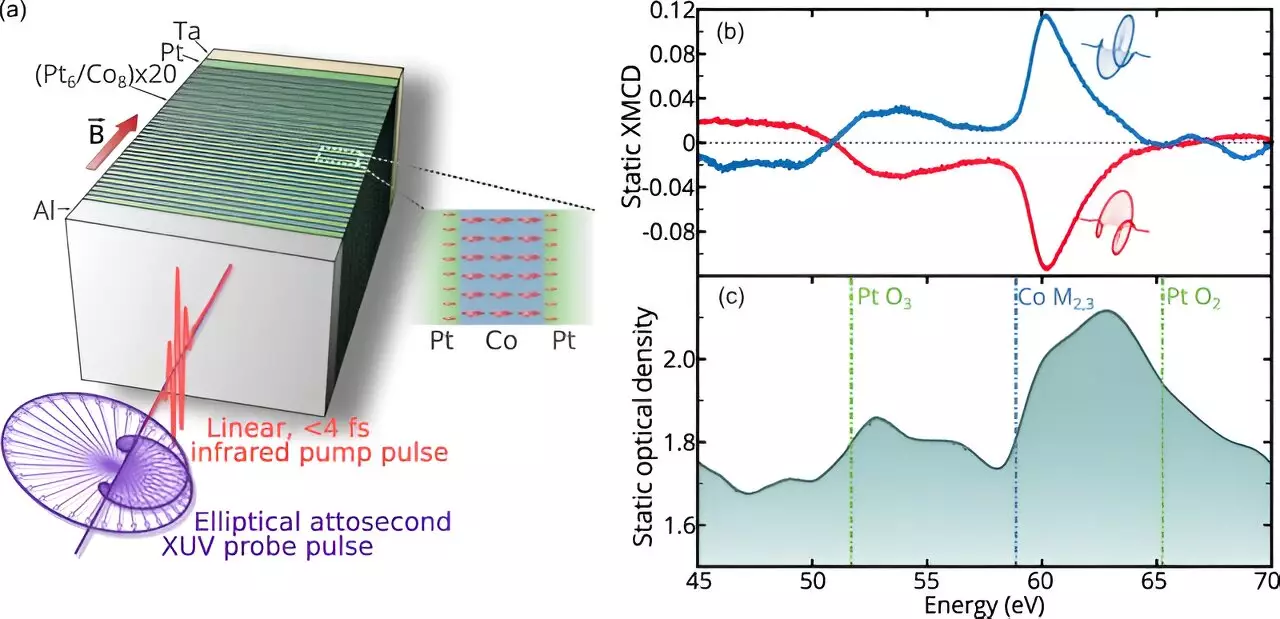Spintronics, a field that merges traditional electronics with quantum properties of spin, is paving the way for next-generation devices. Unlike conventional electronics that rely solely on electric charge, spintronic devices utilize the intrinsic spin of electrons, potentially leading to faster and more efficient technologies. Recent research undertaken by an international team of physicists highlights a novel approach to generating spin currents directly using ultrashort laser pulses, which may reshape our understanding and application of spintronics.
In a groundbreaking study published in *Physical Review Letters*, the researchers reported the successful generation of spin currents through a two-laser technique. The process involved a linearly polarized laser pulse combined with a circularly polarized probe laser, effectively creating an organized flow of electrons. This marks a significant advancement over previous methods that relied on indirect generation, often resulting in a chaotic mix of spins that required cumbersome filtering processes.
The researchers focused on overcoming the limitations posed by earlier attempts, which were frequently hindered by inefficiencies. The conventional approach generated electrons with variable orientations, necessitating a laborious selection process for useful spin currents. In contrast, this new method delivers electrons with uniform spins, leading to a more controlled and efficient current generation process.
Central to the study’s success was the meticulous design of the experimental system. The physicists constructed a target block consisting of 20 alternating layers of platinum and cobalt, each measuring a mere nanometer in thickness. By applying a vertically oriented magnetic field, the team ensured that the spins of the electrons in these layers became aligned. Such precise manipulation of the magnetic field was crucial for enabling effective spin transport between the layers.
When the laser pulses were targeted at this block, the interaction facilitated a rapid migration of electron spins, occurring within a few femtoseconds. This remarkable speed not only surpasses prior techniques but also underlines the potential for real-time applications in spintronic devices.
The research team’s findings have profound implications for the future of electronic devices. With the ability to control and generate spin currents efficiently, there lies the possibility of creating devices that operate at unprecedented speeds and efficiencies, helping to lower energy consumption. As industries and technologies evolve, such advancements could lead to not only more powerful computing systems but also enhanced data storage solutions, fundamentally altering our technological landscape.
Moreover, utilizing theoretical models to validate the experimental outcomes provides a robust foundation for future research. The agreement between theory and experiment strengthens the case for further exploration into direct spin current generation, opening new avenues in the field of spintronics.
This pioneering research into the direct generation of spin currents through ultrashort laser pulses marks a potential turning point for spintronics. By enhancing our understanding of electron spin manipulation and exhibiting a practical application, scientists are poised to unlock a new realm of ultrafast and energy-efficient electronic devices. As we move forward, this innovation could redefine both the capabilities and efficiency of future technologies, heralding a new era in electronic design.

